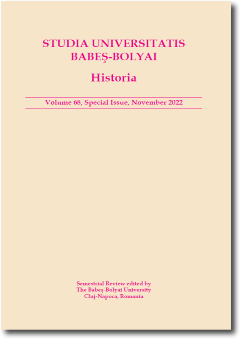WHAT DID THEY SEE? LOOKING AT ART IN A MEDICAL SETTING: BRÂNCUŞI’S ÉCORCHÉ AT THE FACULTY OF MEDICINE IN CLUJ
WHAT DID THEY SEE? LOOKING AT ART IN A MEDICAL SETTING: BRÂNCUŞI’S ÉCORCHÉ AT THE FACULTY OF MEDICINE IN CLUJ
Author(s): Silvia FăgărăşanSubject(s): Cultural history, Higher Education , Pre-WW I & WW I (1900 -1919), Interwar Period (1920 - 1939), History of Art
Published by: Studia Universitatis Babes-Bolyai
Keywords: Faculty of Medicine; Écorché; Constantin Brâncuşi; Victor Papilian; anatomy; medical setting; history of art; context of display; medical gaze; didactic prop;
Summary/Abstract: The main question addressed by this paper stems methodologically from the intersection between the history of art and the history of medicine as embodied by the anatomical object: what do professionals in medicine see when looking at a work of art which takes the human body as its subject? In this particular instance, the medical figure is represented by Victor Papilian, appointed in 1919 as Head of the Institute of Anatomy at the Faculty of Medicine in Cluj, while the work of art presented to his students is the Écorché, executed earlier in 1902 by Constantin Brâncuşi. The story of the Écorché is punctuated by controversies surrounding the number of its original pieces and copies (in Bucharest, Craiova, Iaşi and Cluj), directly related to the institutional efforts invested in their acquisition (either by faculties of medicine or academies of art). However, it is generally agreed that this sculpture primarily functions as a didactic prop, no matter its recipient (the medical student or the training artist). By contextualizing Brâncuşi’s Écorché within the specific field of anatomical knowledge developed at the Cluj Faculty of Medicine in the third decade of the twentieth century, I propose an argument for its hybrid nature, mainly by pointing out the distinct interests corroborated in the creation of this anatomical object with an emphasis on the changes set in motion by the contexts of production and distribution.
Journal: Studia Universitatis Babes-Bolyai - Historia
- Issue Year: 67/2022
- Issue No: Sp.Issue
- Page Range: 111-140
- Page Count: 30
- Language: English

